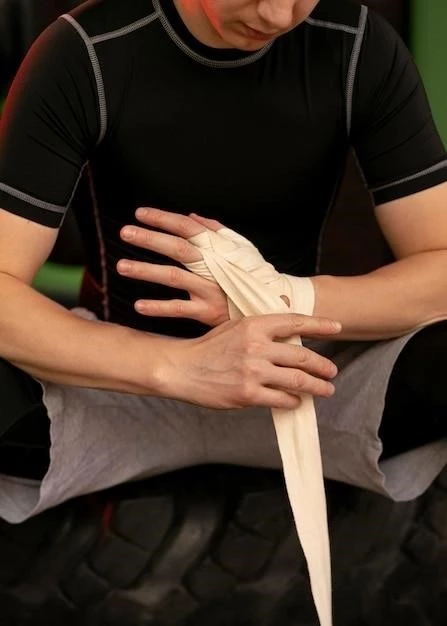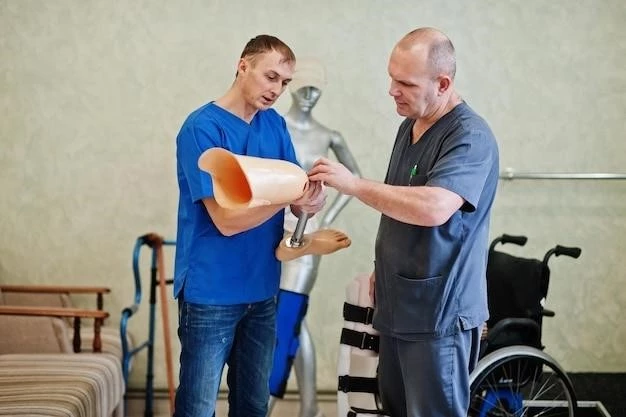Disease Overview
Limb-girdle muscular dystrophy type 2A (LGMD2A) is an autosomal recessive disorder characterized by progressive weakness of the proximal limb and girdle muscles without heart involvement or intellectual disability. It is caused by mutations in the CAPN3 gene.
Characteristics of Limb-girdle Muscular Dystrophy Type 2A
Limb-girdle muscular dystrophy type 2A (LGMD2A) is an autosomal recessive disorder characterized by progressive weakness of the proximal limb and girdle muscles without heart involvement or intellectual disability. The condition٫ caused by mutations in the CAPN3 gene٫ typically manifests with symmetrical weakness primarily around the hips and shoulders. Age of onset can vary widely٫ with muscle weakness often appearing between eight and 15 years.
Patients with LGMD2A commonly experience initial symptoms of weakness and muscle wasting in the hip, thigh, and shoulder muscles. The weakness tends to affect both sides of the body equally, with leg involvement preceding shoulder and arms weakness. This can lead to challenges such as frequent falls and difficulties in activities like running. Lifestyle modifications, physical therapy, and sometimes orthopedic surgery are utilized to manage symptoms, as no disease-modifying pharmaceuticals are currently available for LGMD2A.
What is Limb-girdle Muscular Dystrophy?
Limb-girdle muscular dystrophy (LGMD) is a diverse group of disorders with many subtypes categorized by disease gene and inheritance. LGMD usually manifests in the proximal muscles around the hips and shoulders. Age of onset and severity can vary among the different subtypes.
Manifestation of LGMD in Proximal Muscles
Limb-girdle muscular dystrophy type 2A (LGMD2A) primarily affects the proximal muscles around the hips and shoulders, leading to symmetrical weakness without heart involvement or intellectual disability. Patients may experience initial symptoms of muscle weakness and wasting in these areas, affecting both sides of the body equally. Lifestyle modifications, physical therapy, and sometimes orthopedic surgery are common management approaches for individuals with LGMD2A.
Forms of Limb-girdle Muscular Dystrophy Type 2
Limb-girdle muscular dystrophy type 2 includes various forms with an autosomal recessive inheritance pattern. Calpainopathy, specifically limb-girdle muscular dystrophy type 2A (LGMD2A), is the most common subtype accounting for about 30% of cases.
Prevalence and Genetic Mutation in Type 2A
Limbgirdle muscular dystrophy type 2A (LGMD2A) is the most common form of LGMD٫ affecting about 30% of cases. It is caused by mutations in the CAPN3 gene. LGMD2A presents with symmetrical weakness in the proximal limb and girdle muscles٫ typically appearing between eight and 15 years of age. Lifestyle modifications٫ physical therapy٫ and sometimes surgery are common management approaches.
Clinical Presentation
Individuals with Limb-girdle Muscular Dystrophy Type 2A commonly experience initial symptoms like muscle weakness and wasting in the hip٫ thigh٫ and shoulder muscles. The weakness usually affects both sides of the body equally٫ with leg involvement preceding that in the shoulders and arms. This may lead to challenges in movements such as running and can result in frequent falls.
Onset and Symptoms of LGMD2A
Individuals with Limb-girdle Muscular Dystrophy Type 2A commonly experience initial symptoms of weakness and muscle wasting in the hip, thigh, and shoulder muscles. The weakness tends to affect both sides of the body equally, with leg involvement often preceding that in the shoulders and arms. This can lead to challenges such as frequent falls and difficulties in activities like running.
Genetic Mutations
Limb-girdle muscular dystrophy type 2A (LGMD2A) is primarily caused by mutations in the CAPN3 gene. These mutations lead to the manifestation of symmetrical weakness in the proximal limb and girdle muscles, particularly around the hips and shoulders. The condition typically presents with progressive muscle weakness without heart involvement or intellectual disability.
Role of CAPN3 Gene in Calpainopathy
The CAPN3 gene plays a crucial role in the pathogenesis of calpainopathy, particularly in Limb-girdle Muscular Dystrophy Type 2A (LGMD2A). Mutations in the CAPN3 gene lead to the development of this autosomal recessive disorder, characterized by progressive weakness in the proximal limb and girdle muscles, primarily around the hips and shoulders. This genetic mutation results in symmetrical muscle weakness without heart involvement or intellectual disability.
Diagnosis and Management
The diagnosis of Limb-girdle Muscular Dystrophy Type 2A (LGMD2A) typically involves protein analysis. Mutations in the CAPN3 gene encoding for calpain-3 are central to the diagnosis. Management strategies often include lifestyle modifications, physical therapy, and in some cases, orthopedic surgery to address symptoms associated with progressive muscle weakness.
Diagnostic Criteria for Calpainopathy
Diagnosis of calpainopathy, specifically Limb-girdle Muscular Dystrophy Type 2A (LGMD2A), involves protein analysis focusing on mutations in the CAPN3 gene. Patients typically exhibit symmetrical weakness in the proximal limb and girdle muscles, notably around the hips and shoulders. Early diagnosis aids in appropriate management strategies, such as lifestyle modifications, physical therapy, and occasionally orthopedic interventions to address progressive muscle weakness.
Historical Perspectives
Over time, there have been significant advancements in understanding Limb-girdle Muscular Dystrophy (LGMD) types, including Type 2A. Early descriptions date back to the late 18th century, with ongoing research leading to the identification of responsible genetic mutations and subtypes of the condition. Continued efforts strive to provide better diagnostic and management strategies for individuals with LGMD.
Evolution of Understanding LGMD
Over time, there has been significant progress in comprehending Limb-girdle Muscular Dystrophy (LGMD), including Type 2A. From early descriptions dating back to the late 18th century by Erb and Leyden-Mobius to current research identifying genetic mutations٫ there has been a continuous refinement in recognizing various subtypes and the underlying causes of the condition. Ongoing research aims to improve diagnostic accuracy and enhance management strategies for individuals affected by LGMD.
Current Research
Ongoing research on Limb-girdle Muscular Dystrophy Type 2A (LGMD2A) focuses on identifying novel therapeutic approaches, including gene therapies and targeted interventions to address the underlying genetic mutations causing calpainopathy. Clinical trials and studies aim to enhance diagnostic techniques and refine management strategies to improve outcomes for individuals affected by LGMD2A.
Therapeutic Developments for LGMD
Ongoing research aims to develop novel therapeutic strategies for Limb-girdle Muscular Dystrophy Type 2A (LGMD2A). These approaches include gene therapies and targeted interventions focusing on addressing the genetic mutations linked to calpainopathy٫ specifically mutations in the CAPN3 gene. Clinical trials and studies are focused on refining diagnostic methods and improving management protocols to enhance outcomes for individuals with LGMD2A.

Epidemiology
Limb-girdle muscular dystrophy type 2A (LGMD2A) accounts for a significant portion of LGMD cases, affecting individuals with mutations in the CAPN3 gene. The condition’s prevalence is estimated at approximately 2.2 to 10 per 100,000 individuals, highlighting the importance of genetic testing and detailed diagnostic evaluations for individuals presenting with symptoms suggestive of LGMD2A.
Incidence and Inheritance Patterns of LGMD
Limb-girdle muscular dystrophy (LGMD) is a genetically heterogeneous group of rare muscular dystrophies. LGMD2A, particularly caused by mutations in the CAPN3 gene, demonstrates an autosomal recessive pattern of inheritance. The prevalence of LGMD is estimated to be between 2.27 to 10 per 100,000 individuals, with a predominant effect on hip and shoulder muscles.
Prognosis and Treatment
The prognosis for individuals with Limb-girdle Muscular Dystrophy Type 2A (LGMD2A) varies based on the progression of muscle weakness. Management typically involves lifestyle modifications, physical therapy, and orthopedic interventions to address symptoms and improve quality of life. Regular monitoring and support from healthcare professionals are essential in the comprehensive treatment approach for individuals with LGMD2A.
Impact of Lifestyle Modifications and Therapies
Lifestyle modifications and therapies play a crucial role in managing Limb-girdle Muscular Dystrophy Type 2A (LGMD2A). These interventions aim to address the symptoms associated with progressive muscle weakness in the proximal limb and girdle muscles. Strategies may include physical therapy, orthopedic interventions, and tailored exercise regimens to optimize functional abilities and enhance quality of life for individuals affected by LGMD2A.

Support and Resources
Accessing support and resources is crucial for individuals with Limb-girdle Muscular Dystrophy Type 2A (LGMD2A). Organizations offering assistance can provide valuable information and support networks for patients and families navigating the challenges associated with this rare genetic condition. Seeking help from these organizations can help improve the quality of life for those affected by LGMD2A.
Organizations Providing Assistance for LGMD Patients
Support organizations play a vital role in aiding individuals with Limb-girdle Muscular Dystrophy Type 2A (LGMD2A). These organizations offer valuable resources٫ information٫ and support networks to assist patients and their families in navigating the challenges associated with this rare genetic condition. Seeking help from these organizations can significantly impact the quality of life for those affected by LGMD2A.
